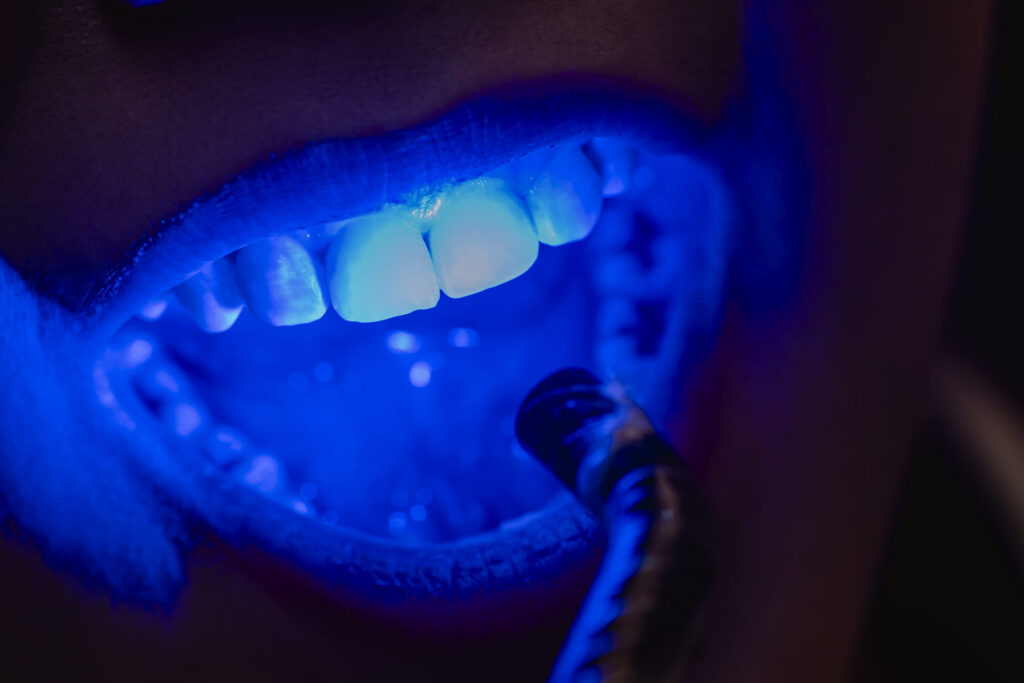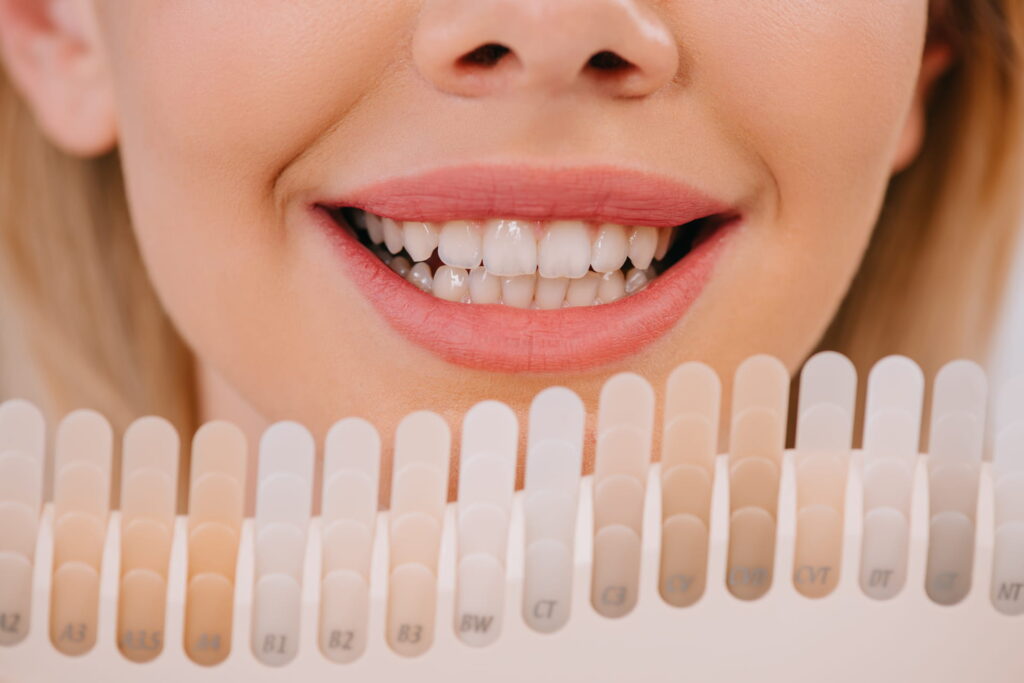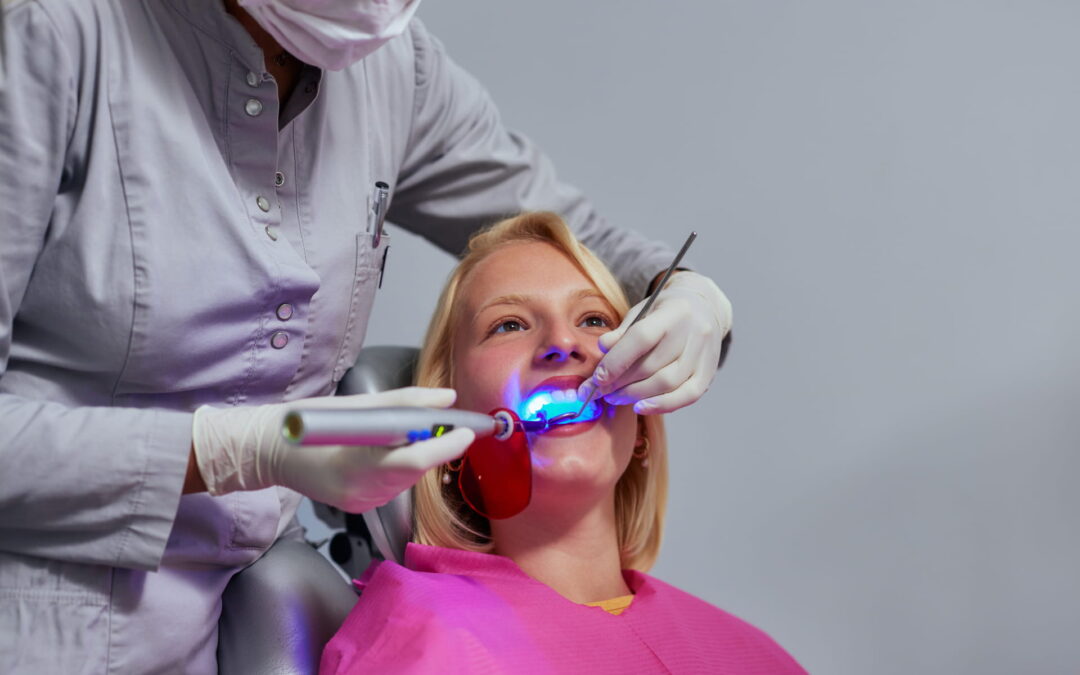A brilliant smile creates a strong impression, but discoloration from coffee, tea, tobacco, and aging can gradually diminish tooth brightness. Many individuals experiment with store-bought whitening products, yet professional treatments provide more reliable and safer results. A dentist ensures teeth are brightened using advanced techniques while protecting enamel and gum health. Learning how a dentist whitens teeth safely helps patients choose the most effective method for their specific needs.
Why a Dentist Assesses Tooth Discoloration Before Whitening
A dentist thoroughly examines discoloration to determine whether stains are external, internal, or caused by an underlying dental issue. Some stains result from dietary habits, while others stem from medication, aging, or trauma. Many individuals assume all whitening methods work similarly, but different stains require specialized approaches.
- Surface stains from coffee, tea, and tobacco build up on the enamel over time.
- Internal stains develop beneath the enamel and may result from antibiotic use, injury, or excessive fluoride exposure.
- Natural aging causes enamel thinning, making the underlying dentin more visible and yellowish.
How a Dentist Prepares Teeth for Whitening Treatment
A dentist ensures teeth are in optimal condition before starting any whitening treatment. Professional cleaning removes surface stains, allowing whitening agents to work more effectively. Skipping this step may result in uneven whitening or less noticeable results.
- Plaque and tartar removal ensures whitening agents reach the enamel directly.
- Dental examinations detect cavities or gum sensitivity that may cause discomfort during treatment.
- Protective measures, such as gum barriers, prevent irritation from strong whitening gels.
What a Dentist Uses for Professional Whitening Treatments
A dentist applies medical-grade whitening agents that produce faster, more consistent results than over-the-counter products. Some procedures use specialized light or laser activation to accelerate whitening. Many patients notice dramatic improvements after a single session.
- High-concentration peroxide-based solutions effectively lift deep stains.
- Light-activated whitening speeds up chemical reactions, enhancing brightness.
- Multiple application layers ensure thorough coverage for uniform results.

Why a Dentist Provides Custom Whitening Trays
A dentist offers custom whitening trays for at-home use, ensuring even application of whitening gel. Generic trays or strips often fit poorly, leading to irritation or uneven results. Personalized trays allow individuals to whiten their teeth gradually and with greater comfort.
- Custom-fit trays prevent excess gel from leaking onto gums, minimizing irritation.
- Even gel distribution helps achieve consistent whitening across all teeth.
- Gradual whitening with controlled-strength gel allows for long-lasting results.
How a Dentist Treats Deep Stains Resistant to Whitening
A dentist uses advanced techniques to address persistent stains that do not respond to standard whitening. Some stains require cosmetic procedures rather than chemical treatments. Patients with long-term discoloration benefit from customized solutions.
- Internal bleaching brightens teeth from within, especially after root canals.
- Veneers cover deep stains while enhancing overall tooth symmetry.
- Composite bonding improves the appearance of discolored teeth without extensive treatment.
What a Dentist Recommends for Managing Whitening Sensitivity
A dentist helps reduce discomfort associated with whitening treatments, ensuring patients experience minimal irritation. Some individuals have naturally sensitive teeth, while others develop discomfort from frequent whitening. Proper precautions can prevent unnecessary sensitivity.
- Desensitizing ingredients, such as potassium nitrate, help soothe nerve irritation.
- Shorter whitening sessions reduce exposure to bleaching agents, limiting discomfort.
- Post-treatment applications of nanohydroxyapatite strengthen enamel and protect against future sensitivity.
Why a Dentist Warns Against Overusing Whitening Products
A dentist advises against excessive whitening, which can weaken enamel and increase long-term sensitivity. Many store-bought products contain abrasive components that gradually erode tooth structure. Achieving a whiter smile should not come at the expense of overall oral health.
- Frequent use of whitening strips may thin enamel and increase tooth sensitivity.
- High-strength whitening products should only be used under professional guidance.
- Non-abrasive whitening toothpaste helps maintain brightness without damaging enamel.
How a Dentist Helps Maintain Whitening Results Over Time
A dentist provides valuable recommendations for preserving whitening results. Stains can return quickly without proper oral care, making maintenance a key factor in long-lasting brightness. Small lifestyle changes contribute significantly to extended whitening effects.
- Reducing consumption of stain-causing beverages like coffee and tea prevents rapid discoloration.
- Regular professional cleanings remove minor surface stains before they become permanent.
- Using gentle whitening toothpaste ensures ongoing brightness without excessive abrasion.

Key Takeaways on Safe and Effective Teeth Whitening
A dentist customizes whitening treatments based on individual needs, ensuring both safety and effectiveness. Identifying the cause of discoloration allows for targeted treatments that enhance brightness while maintaining oral health. Proper aftercare helps extend whitening results and prevents damage to enamel and gums.
- Professional whitening treatments offer superior results compared to store-bought alternatives.
- Custom whitening trays provide better fit and protection, reducing gum irritation.
- Safe and controlled whitening methods achieve a bright smile without compromising dental health.
Frequently Asked Questions
Can a dentist whiten teeth in one visit?
A dentist can achieve significant whitening in a single session using high-strength whitening agents. Some treatments include light activation to enhance and speed up the process.
How long do professional whitening results last?
Results can last between six months and two years, depending on diet, oral hygiene, and lifestyle habits. Regular cleanings and occasional touch-ups help maintain brightness.
Is whitening suitable for individuals with sensitive teeth?
A dentist can recommend specialized treatments and lower-intensity whitening gels to minimize discomfort. Custom trays and shorter whitening sessions help reduce sensitivity.
Which foods and drinks cause teeth to stain after whitening?
Dark beverages such as coffee, tea, and red wine contribute to staining. Acidic foods should also be avoided to protect enamel from erosion.
Are store-bought whitening products as effective as professional treatments?
Over-the-counter whitening products contain lower concentrations of active ingredients and may take longer to show results. A dentist uses stronger, controlled treatments for more noticeable and lasting effects.











